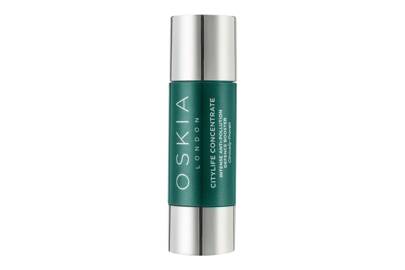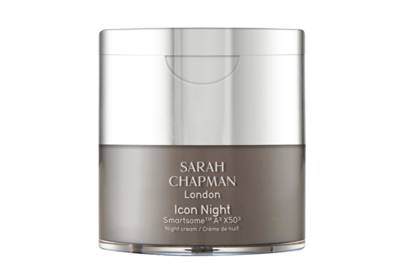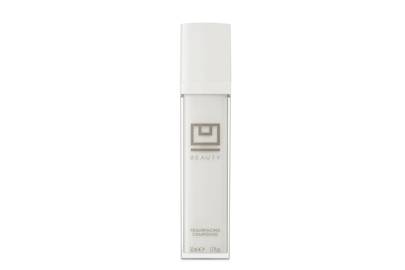All products are independently selected by our editors. If you buy something, we may earn an affiliate commission.
We know how complicated and incredible our bodies are. The networks within our brain and the connections within our muscles are infinitely complex. Likewise, the processes within our skin have taken scientists years to understand (and there’s still so much left to discover). It stands to reason that our skincare has to be ultra sophisticated if it is to try and keep up.
It’s no longer simply a matter of smearing an emollient cocktail of ingredients on top of our face, if we’re to get the best out of our complexions. Now, research labs are making strides with futuristic solutions designed to deliver the ingredients we need, exactly where we need them, in a much smarter way.
“Skincare actives only work on a cellular level if they can actually reach where they are needed and are in a form that the skin cells can use,” explains Georgie Cleeve, founder of skincare brand, Oskia. “One of the skin’s primary functions is to keep things out of its many different layers,” which prevent ingredients from penetrating. “It has long been the bane of skincare manufacturers that most ingredients cannot and will not penetrate into the cellular levels where the magic happens,” she says.
New technology seeks to overcome the barriers to entry that have (quite literally) held skincare back until now. Drone technology, micro-encapsulation and bioavailability may all sound space-age, but they can help to deliver ingredients exactly where we need them, like a Sat-Nav for our skin. They can combine incompatible ingredients together in a single formula without causing irritation. They can deliver ingredients deeper into our dermis and they can feed our skin with ingredients it recognises and absorbs immediately, without the need for synthesis. Effectively, these technologies make our skincare work harder than ever before. Sound good? Here’s how.
Encapsulation and micro-encapsulation
Encapsulated products are pretty well established now. Ingredients are suspended within a delicate membrane which bursts on contact with the skin, or when manually broken by you. Elizabeth Arden’s biodegradable Ceramide Capsules (from £39) were the first to change the game. Each pre-dosed pod holds exactly the right amount of product your skin needs, while the physical casing shields against disruptors like light and air which can degrade ingredients.
But now formulators are using this idea to create encapsulations inside creams and serums. “Just as you package a skincare product in a jar or pump, now we can package our ingredients into tiny capsules that can better protect and preserve the ingredient and allow for a time-release distribution,” says Georgie.
“It also allows us to make a formula within a formula,” explains Georgie. “Many actives are unstable or incompatible with each other,” she says, “which is particularly true for antioxidants, which oxidise easily and are highly volatile. For example, EUK 134, a Manganese derivative that’s one of the most powerful antioxidants known, doesn’t sit well with Vitamin C or acidic formulations. But we’ve been able to combine the two using microencapsulation, which keep them apart in the formula until they have absorbed into the skin cells,” says Georgie, who put this powerhouse duo to good use in Oskia’s CityLife Antioxidant Concentrate (£110).

Encapsulation can improve penetration and delivery, too. “Oil soluble encapsulation allows water-soluble actives to pass through the skin layers,” explains Georgie, so instead of breaking open on the skin’s surface, they travel further down to where they’re needed.
Not only does this offer better penetration, but the use of a capsule can buffer the top layer of skin from potentially irritating ingredients, like retinol. Facialist, Sarah Chapman, uses encapsulation in her Icon Night Smartsome A3X503 night cream (£98) for this very reason. Potent retinaldehyde is suspended in a capsule until it makes its way toward the cellular level of skin where it’s released without causing sensitivity.

Drone technology
If you’re imagining skincare ingredients being dropped to a specific location from above, you’re not far wrong. “Drone technology offers targeted treatment to problem areas. Think of it as a GPS for your skincare – searching for where the skin needs it most and delivering it there” explains Elemis co-founder and president, Noella Gabriel.
It builds on the work done by encapsulation, the difference is the addition of markers (amino acids or peptides, fused to the front of the capsules) which help guide it to specific fibroblast cells (the cells that synthesise collagen and other essentials we need for our cell matrix). “The peptide used on the outside of the drone is used to target the correct cells,” explains Noella. Each fibroblast has its own distinct shape, therefore the peptides can be engineered to fit perfectly – like a jigsaw puzzle.
The bonus is that guide peptides can serve a dual function, of navigating and cell boosting. For instance, the heptapeptide guiding Elemis’ Pro-Collagen Overnight Matrix (£148), has been shown to stimulate elastin synthesis. The tetrapeptide inside (which boosts the skin’s natural production of hyaluronic acid) is only released once the capsule has connected with the fibroblast, thanks to encapsulation. Combined, this means ingredients are much more targeted.

Why is this important? “Traditional formulas spread anti-aging ingredients evenly to both healthy-looking and damaged-looking skin,” says Tina Craig, founder of cult new skincare brand, U Beauty. “This conventional approach treats the entire skin surface the same, which is suitable for damaged-looking areas but may be disruptive to healthy-looking skin’s equilibrium,” she says. It’s this that has contributed to the rise of sensitised skin, such as redness, irritation and dryness, with us overusing products on areas that don’t need it. “Furthermore, the skin becomes tolerant,” adds Tina. Over time, it comes to rely on increasing potent doses of active ingredients.
SIREN technology
A spin-off of drone technology, SIREN technology works in much the same way. However, instead of uniting active ingredients with targeted fibroblasts, it works to protect against the damaging effects of free radicals (found in pollution and UV rays), which cause premature ageing, by bringing free radicals together with neutralising, antioxidant-loaded SIREN capsules.
“Free radicals accumulate where the skin is frail,” says Tina, however, the SIREN capsule attracts free radicals away from skin to the capsule. “When the free radical penetrates the SIREN capsule wall, antioxidants immediately neutralize the free radical, stop the damage cascade and activate the controlled release of gentle skin-restoring ingredients specifically where needed,” she says. SIRENs can only be activated by free radicals, so the formula is only released where skin damage from free radicals is occurring. The higher density of free radicals equals more SIREN activations.
It’s found in the ground-breaking U Beauty Resurfacing Compound (from £85) – a one-stop shop serum packed with retinol, to antioxidants, vitamins and hyaluronic acid – which sold out within 48 hours of launch on Net-A-Porter (but is now, thankfully, back in stock).

Bioavailability
When we talk about our skincare as face food, it can be misleading. “Our skin is not a digestive system,” says Georgie. “It cannot break down ingredients (plant oils or extracts) into the different nutrients and chemicals,” she explains. It means that smearing complexes filled with filler ingredients onto skin can be difficult to break down and utilise. “For these to be properly effective, they need to be bio-available – meaning in a form that the skin cell can utilise directly.” This again will play into how deeply a formula will be accepted and absorbed by skin. The base an ingredient is suspended in can make all the difference – oil soluble solutions will travel further than water-based ones, and again, encapsulation will help the right ingredients reach the right areas.
